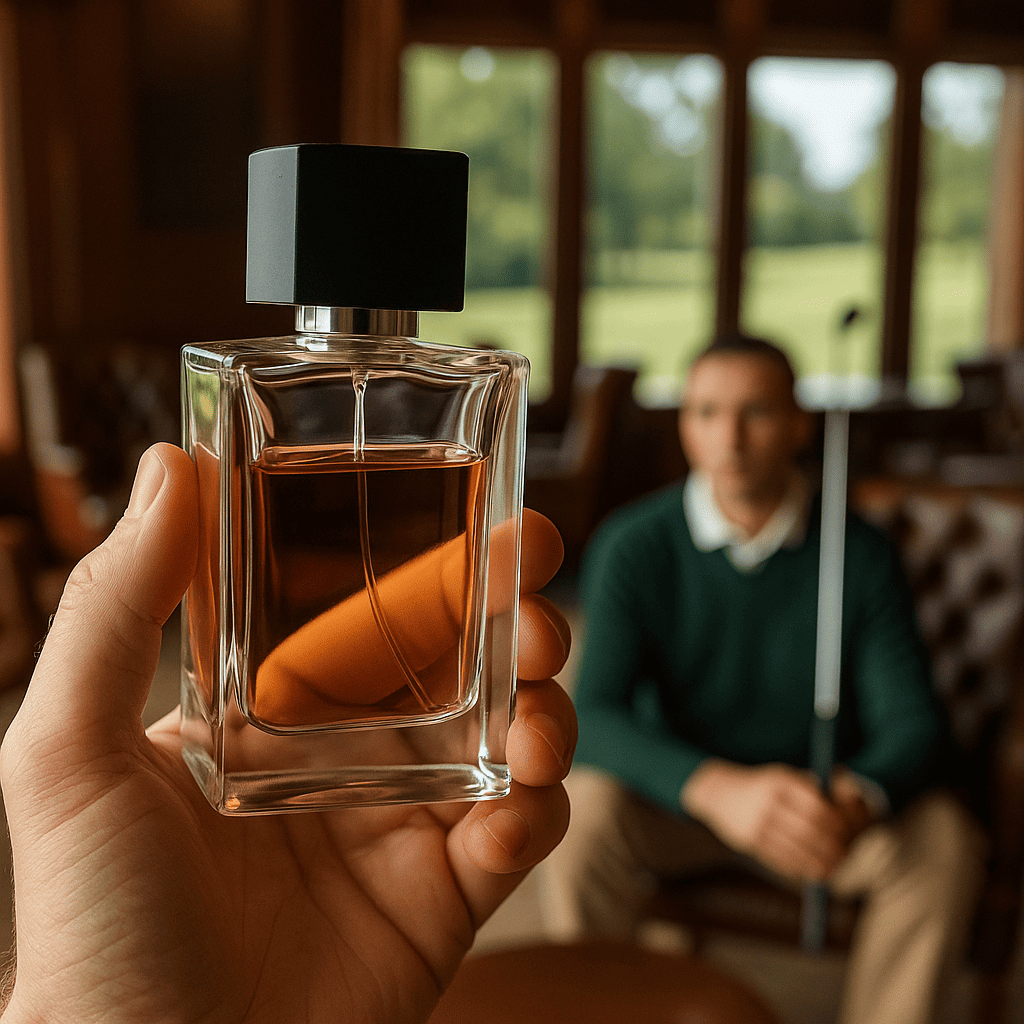When the club doors quietly close behind you, the air feels denser: the scent of polished wood, fireplace smoke, cool marble, and distant morning dew from the course. There is already so much in this ambient fragrance that any new scent becomes part of the shared accord. Choosing a personal perfume becomes a dialogue—with the architecture, the etiquette, and one’s inner self.
For some, fragrance is an accessory that complements a tie or pocket square. For others, it’s an invisible shield that enhances confidence. On club grounds, where appropriateness outweighs originality, a signature scent becomes a personal signature. So how does one choose a bottle that speaks louder than a business card, without disrupting the harmony of the circle?
Fragrance as a social passport
Psychologists have long noted that people form first impressions in 7–12 seconds, and scent plays a key role alongside gestures and tone of voice. At a country club, scent can precede the visual—distance is respected, and the first impression often arrives as a delicate trail. Thus, a personal fragrance acts like a social passport—indicating taste, manners, and travel experience.
A suitable club scent must be inclusive: it should not disturb a partner’s focus on the putting green, interfere with the crisp linen of a dining table, or overpower the hearth’s smoke in the library. This is where “skin-close” fragrances come in—white musk, transparent iris, light tea notes. Their goal is to evoke refinement, not announce presence.
Still, there is room for personal signature. Experienced members often add a subtle twist to a minimalist base: rare juniper, Haitian vetiver, or vintage aldehydes. This keeps the scent intimate yet memorable. One rule prevails: if your scent lingers more than three seconds at arm’s length, it’s too much.
Olfactory portrait: habits and environment
To have a fragrance that fits like a glove, start with an olfactory portrait. It’s built from three circles: habits, context, and intent. Habits include grooming, beverages, even your partner’s favorite perfume. If your morning starts with espresso and ends with whiskey, lean into woody-bitter accords—they’ll match your sensory rhythm.
Context refers to how you use the club. Some spend half the day in meetings; others come only for sunrise golf. Daylight favors light citruses; twilight lounges suit amber and leather. Intent defines the message: do you want your scent to invite connection or set boundaries?
A helpful method is “trial layering”—apply a new perfume on one wrist, your go-to scent on the other. Over the day, track your comfort: which scent feels more natural, which one fades gracefully. After three days, a clear favorite usually emerges—one that echoes your internal monologue.
The testing ritual: from blotter to skin
Luxury boutiques are tempting, but mistakes happen most easily there. Paper blotters reveal the pyramid but not the skin chemistry. Experienced selectors follow this process:
- first test – on a blotter to grasp the top notes and projection
- second – on the wrist to test pH and warmth interaction
- third – on collar or cuff, where the scent stays longest
Leave at least 30 minutes between steps. Skin, fabric, and fresh air are three distinct stages. Purchase only after the third act—when you know how the scent behaves while walking, swinging a club, or shaking hands.
Concierges often advise a two-day gap between tests to reset your olfactory senses. This testing ritual protects you from impulsive purchases—and from bottles that end up forgotten in drawers.
Balancing season and setting
The club calendar mirrors the seasons. Spring and summer bring warmth, humidity, and outdoor games. Here, citrus-tea formulas with yuzu, bergamot, and green tea shine. They evaporate quickly, leaving a refreshing veil.
Fall and winter shift the scene indoors to fireplace warmth. Amber-woody compositions—cedar, sandalwood, light labdanum—fit this backdrop. But temperature matters: cold skin slows down dry-down, so opt for extrait with low dosage.
Many members keep two bottles in their locker: one for day, one for evening. They’re not duplicates, but a tandem. Light eau de toilette by day, warm extrait by night. This aromatic rhythm adapts to light and schedule.
Personalization: services and niche brands
If uniqueness is the goal without loudness, opt for personalized services. Brands like Ex Nihilo and Le Labo let you mix base and accent notes. A player can add something personal—a touch of childhood sage or rare Peruvian balsam. The result is a scent that can’t be found on a shelf.
Niche perfumery also offers room for creativity. Small brands experiment with molecules like iso e super, crystalline musk, or smoked tea leaf. These leave a soft trail but carry bold personality. This kind of personalization offers authorship without flamboyance.
Still, limit yourself to two layers: a base and a twist. Too much variation creates a scent collage, disrupting club harmony. Your signature should be clear—like initials on a handkerchief, not graffiti.
Signature and consistency: owning your scent
A signature scent isn’t just a choice—it’s consistency. One day smelling like vetiver, the next like oakmoss, and the next like caramel won’t define identity. People recognize you by a stable trail associated with your presence.
The secret is proper dosage. Two sprays in the morning, one refresh after a shower, none before dinner. This keeps the base familiar but not overwhelming. A scent should last half a meeting—not dominate an entire evening.
Care also matters. Store bottles at 18°C, away from light and steam. The longevity and harmony of the notes reward mindful owners. When maintained well, a scent can serve for years—not fade in a season.
Confidence in your scent aligns your demeanor: you know how you smell to others, without fear of misstep. For more on proper dosage and occasion timing, read “Montale parfum paris fragrance etiquette at the country club”.
Questions and answers
If your trail is noticeable from more than 1.5 meters or draws comments, reduce to one spray and apply to your chest, not wrists.
At least three days: day one on blotter, day two on skin, day three on fabric. This shows full behavior of the scent.
Yes—if one is a musky base and the other an accent. Just be sure they share no more than two key notes to avoid clashes.

